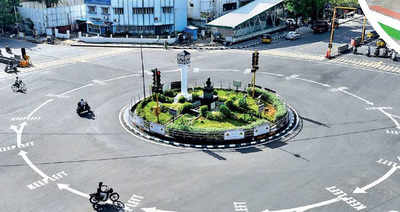The Hindu 02.05.2013
Century-old water pipelines besieged by encroachments

With the construction of residential complexes in the
merged areas proceeding at a frantic pace, the decades-old conduit
pipelines, the backbone of the city’s drinking water distribution, are
under threat.
The land through which these
underground pipelines pass is being encroached upon in various areas.
The 10-km long-pipelines run from Red Hills reservoir to Kilpauk water
treatment plant on New Avadi Road.
Of this,
Metrowater sites between Red Hills and Rajamangalam are in danger of
being encroached upon. Metrowater lands under which the second half of
the pipelines run — between Villivakkam and New Avadi Road — are already
heavily encroached. Such activities not only risk damaging the pipeline
but also delay any repair as the encroachments have to be removed
first.
The three pipelines, laid at various points of
time by Chennai Metrowater, are some of the first bits of
infrastructure that supplied safe drinking water to the city. The
earliest pipeline, which is still in use, was constructed with brick
masonry in 1914. With one of the pipelines having collapsed a few years
ago, the two remaining ones carry about 250 million litres a day (mld).
These
lines pass through different areas, including Surapet, Puthagaram,
Rajamangalam and New Avadi Road, before culminating in Kilpauk water
works. Several properties adjoining the Metrowater’s lands in these
areas are being readied for construction.
Recently,
elected representatives in Ambattur objected to a construction firm
carrying out digging activity on a stretch near Metrowater’s site, a
move that risked damage to the pipeline. The water agency has asked the
firm to stop construction of the culvert to save the line from any
damage.
Moreover, some stretches are used as short
cuts by residents and heavy vehicles. Some residential colonies for
instance have laid roads on stretch over the conduit lines to gain
access to Water Canal Road that connects with Inner Ring Road.
Metrowater
has taken to painting inspection chambers, which resemble tanks, on
their plots of land to indicate the presence of pipelines. It has also
put up boards to indicate that the land belonged to the water agency.
Residents of Puthagaram and Surapet also suggested that the agency could close the new lanes that were created illegally.
In
other cases, said B. Kingsly, a resident of Surapet, Metrowater should
provide culverts to enable vehicles to cross the stretch beneath which
the pipelines are laid.
Sources said there is an
urgent need to fence strips of land belonging to Metrowater to secure
the conduit lines. Most of these strips of land are at least 15 metres
wide. A separate wing was essential to safeguard such infrastructure
from further encroachments, said officials.
Meanwhile,
the water agency has called for tenders to reconstruct the two
pipelines into one concrete box channel with carrying capacity of up to
400 mld.
Sources in Metrowater said that the work
would initially be taken up in a stretch of five km between Red Hills
reservoir and Rajamangalam as the other stretch has been heavily
encroached upon.

